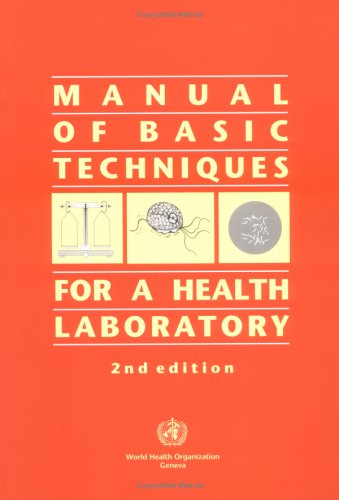

Most ebook files are in PDF format, so you can easily read them using various software such as Foxit Reader or directly on the Google Chrome browser.
Some ebook files are released by publishers in other formats such as .awz, .mobi, .epub, .fb2, etc. You may need to install specific software to read these formats on mobile/PC, such as Calibre.
Please read the tutorial at this link. https://ebooknice.com/page/post?id=faq
We offer FREE conversion to the popular formats you request; however, this may take some time. Therefore, right after payment, please email us, and we will try to provide the service as quickly as possible.
For some exceptional file formats or broken links (if any), please refrain from opening any disputes. Instead, email us first, and we will try to assist within a maximum of 6 hours.
EbookNice Team

Status:
Available0.0
0 reviewsThe manual provides a practical guide to the safe and accurate performance of basic laboratory techniques. Intended for use by laboratory technicians working in peripheral-level laboratories in developing countries, the book emphasizes simple, economical procedures that can yield accurate results where resources, including equipment, are scarce and the climate is hot and humid.
The book is divided into three parts. The first describes the setting-up of a peripheral health laboratory and general laboratory procedures, including use of a microscope and laboratory balances, centrifugation, measurement and dispensing of liquids, and cleaning, disinfection and sterilization of laboratory equipment. Methods of disposal of laboratory waste, dispatch of specimens to reference laboratories and laboratory safety are also discussed. The second part describes techniques for examining different specimens for helminths, protozoa, bacteria and fungi. Techniques for the preparation, fixation and staining of smears are also discussed. The third and final part describes the examination of urine, cerebrospinal fluid and blood, including techniques based on immunological and serological principles. For each technique, a list of materials and reagents is given, followed by a detailed description of the method and the results of microscopic examination.
Numerous illustrations are used throughout the book to clarify the different steps involved. A summary of the reagents required for the various techniques and their preparation is provided in the annex.